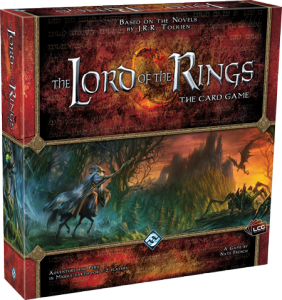Quickbeam: Greetings Ringer fans! As promised on last week’s TORn TUESDAYS (where we played the cards live on air using picture-in-picture closeup) here we review the intriguing new Living Card Game set in Tolkien’s mythological world; fresh from the familiar folks of Fantasy Flight Games (ah, sweet alliteration). Joining me on the balcony tonight is long-time Green Books contributor Ostadan (“Lore and Letters”) who, like me, shares a passion for both gaming and JRRT. I am Quickbeam, host of TORn Tuesdays and co-creator of RINGERS. Shall we begin at the beginning?
Ostadan: Fantasy Flight Games has had a license for table games based on The Lord of the Rings for more than ten years now. Their first Tolkien-themed game was Dr. Reiner Knizia’s Lord of the Rings board game. This game took an unusual approach: it is a coöperative game in which up to five players players (representing five hobbits including co-conspirator Fatty Bolger) operate as a team against the game system in an attempt to destroy the Ring before they are corrupted by Sauron. Fantasy Flight Games’ new offering, The Lord of the Rings: The Card Game, designed by Nate French, is the first expandable card game designed specifically as a cooperative (or solo) game. Once again, players team up “against the game,” this time playing cards to complete pre-programmed quests (represented as cards) in the face of fearsome foes and evil events (represented by, yes, cards).
Quickbeam: I’m glad we are starting this conversation with the Knizia LOTR masterpiece. So very cool, let me tell you… John Howe really brought some stunning artwork to that game (see my original article over in Green Books comparing it to the 1979 Bakshi classic from Milton Bradley). So when FFG announced they would release a stylish new cooperative game in the Tolkien universe, I said: “Oooohh, I am so there!”
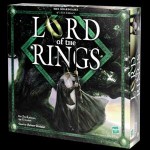 Ostadan: Boardgamers (which includes players of complex card games of this type) often discuss the ‘theming’ of the game, that is, how well the theme is presented by the game: is it integral to the game mechanics or just ‘pasted on?’ Is it presented compellingly so that players feel they are part of a story? In a game based on The Lord of the Rings, does the game show solid knowledge and respect for the source material, or does it present a world that only superficially resembles Tolkien’s Middle-earth? For a fan of Tolkien’s work, or Jackson’s version, this question may well be more important than matters of game mechanics.
Ostadan: Boardgamers (which includes players of complex card games of this type) often discuss the ‘theming’ of the game, that is, how well the theme is presented by the game: is it integral to the game mechanics or just ‘pasted on?’ Is it presented compellingly so that players feel they are part of a story? In a game based on The Lord of the Rings, does the game show solid knowledge and respect for the source material, or does it present a world that only superficially resembles Tolkien’s Middle-earth? For a fan of Tolkien’s work, or Jackson’s version, this question may well be more important than matters of game mechanics.
Quickbeam: Indeed, the best place to start designing a game is, I believe, from this simple question: “How do the abstractions in this game fit an existing mythology?” or better: “How does the mythology lend itself to kick-butt game play?” For someone like me who’s been playing Magic: The Gathering since the dawn of time, I’ve seen amazing games with no tie-in to any licensed story. In that case it’s more about the fluidity of the mechanics. I’m pleased to say Mr. French and FFG have scored a nice hit with both concerns.
Ostadan: Graphically, the game is beautifully done. It is refreshing once again to see game components with original artwork, from a variety of artists, showing the artists’ distinct visions of the characters and locales in Tolkien’s world, with little obvious influence from the Jackson films (hey, dark-haired Legolas!). Nobody will find that every picture corresponds to his or her own imagination, but they are almost all of solid quality and are one of the real pleasures in the game.
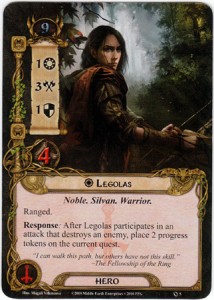 Quickbeam: Oh, I totally agree 1,000% on the artwork. The visual design alone is superior to and easier to comprehend than many other collectible card games (CCGs). You’ve got to see up close how carefully they’ve done the printing. The images are borderless, full-bleed art to the very edge, giving each painting a more “open and breathable” feel. Important game icons are designed smartly too.
Quickbeam: Oh, I totally agree 1,000% on the artwork. The visual design alone is superior to and easier to comprehend than many other collectible card games (CCGs). You’ve got to see up close how carefully they’ve done the printing. The images are borderless, full-bleed art to the very edge, giving each painting a more “open and breathable” feel. Important game icons are designed smartly too.
Ostadan: On the other hand, as an adaptation (of sorts) of Tolkien’s world, it is a curiously mixed bag. While the card artwork is of good quality, the box and rulebook are decorated with Tengwar-like letters that do not actually mean anything in any mode known to Tolkien (one suspects it is just someone buzzing along the keyboard with a Tengwar font turned on). One of the hero cards is Denethor, and he has an ability to predict enemy actions that simply and effectively portrays his possession of the palantír of Minas Tirith; on the other hand, what is Denethor doing running around Mirkwood with Glorfindel and a non-Tolkien Gondor noblewoman? Cards have traits like ‘Dwarf’ and ‘Ranger;’ but then some cards use Elvish plurals in a way that is both incongruous and inappropriate – for example, Gandalf is ‘Istari,’ which is an inconsistent plural in the first place, and is a pretentious use of a word that does not appear in the main narrative of The Lord of the Rings. ‘Wizard’, used even by Saruman, would be more fitting for the Gandalf card.
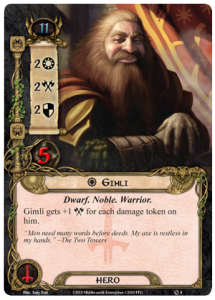 The game is, like FFG’s 2009 adventure boardgame Middle-earth Quest, set in that seventeen-year period between the Long-expected Party and the Shadow of the Past. Why, then, are there references to the ‘Necromancer,’ an identity disposed of long before this period? Obviously, in a format like a card game, there will be a lot of abstractions, and it would be foolish to expect any kind of close simulation of Tolkien’s world; but it is disheartening to see many relatively simple details like this managed so ham-handedly.
The game is, like FFG’s 2009 adventure boardgame Middle-earth Quest, set in that seventeen-year period between the Long-expected Party and the Shadow of the Past. Why, then, are there references to the ‘Necromancer,’ an identity disposed of long before this period? Obviously, in a format like a card game, there will be a lot of abstractions, and it would be foolish to expect any kind of close simulation of Tolkien’s world; but it is disheartening to see many relatively simple details like this managed so ham-handedly.
Quickbeam: I looked through the whole box for any card with a magic ring. None. Zero. Zip. So I thought to myself, “If this is indeed a LotR game, eventually somewhere … sometime, there must be Rings of Power.” But not yet – they may be released in a future Adventure Pack. I’m okay with the creative leeway they’ve taken introducing non-Tolkien characters[1] as hero cards who fight alongside Glóin and Éowyn and Gandalf. I got a kick out of ‘Scenario Cards’ that set us on our game quest with flavor text like: “You are traveling through Mirkwood Forest, carrying an urgent message from King Thranduil to the Lady Galadriel of Lórien. As you move along the dark trail, the spiders gather around you…” Oh goody! Lee Pace has lost his internet and needs us to hand-deliver an email to Cate Blanchett… Truly the Escape From Dol Guldur scenario has delicious flavor text simulating a brazen rescue attempt in that mysterious dark fortress. You must find a Map first, a Torch, even a “Shadow Key”…
Ostadan: Fortunately, aside from these small frustrating moments of head-shaking and sighing, the game is cracking good fun! It is not a terribly simple game, but its mechanics will not be daunting to anyone familiar with other such card games like Magic: the Gathering or even Pokémon; for others, the game probably can be learned easily enough from someone who already knows the game well; and because of the coöperative nature of the game, it may even be possible to play it with fairly young children, with considerable parental guidance along the way. 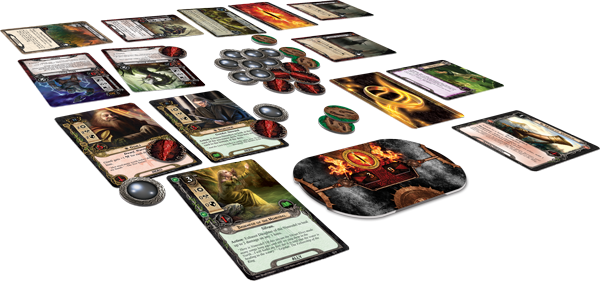
Fantasy Flight Games’ site has a downloadable copy of the rulebook and also introductory videos showing how the game is played, so there is no need to describe play in detail here. Players’ cards (the Core Set contains four starter decks to choose from) include up to three main Heroes, such as Aragorn, Théodred (who isn’t dead yet) and Glorfindel; such Allies as Faramir and Gandalf as well as more generic types (‘Guard of the Citadel’); Events that can be played at need (Valiant Sacrifice, which helps a player when a character dies); and Attachments such as the Blade of Gondolin that can be associated with characters. They are all employed to complete Quests represented by a small number of card stages and a variable number of Encounter cards representing Locations, Enemies, and Treachery (events, often quite devastating), and occasionally Objectives that can be found. The initial Core Set comprises three such quests: a beginner’s game, Passage Through Mirkwood, an intermediate quest, Journey Down the Anduin, and the extremely difficult Escape From Dol 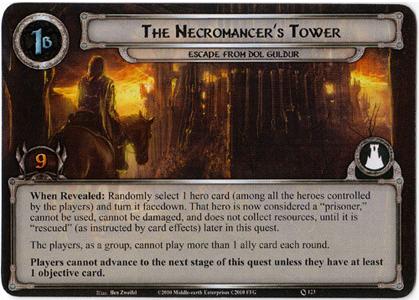 Guldur. The first can be beaten by a single starter deck (although this will take practice and some luck; and not all the starter decks are equally capable in solo play) and quite easily by two players with starter decks. The second can be beaten solo with a more carefully constructed deck (made by combining two or more starter decks’ cards) and some luck, and somewhat more easily by two. The third Quest is nearly impossible to win solo, and even two or more players will need some good luck and deck tuning. Adding a third or fourth player can make the quests easier, although I strongly suspect that the game has been ‘tuned’ as a 2-player game. So there are a well-balanced set of options that give players a good chance of winning without making it too easy.
Guldur. The first can be beaten by a single starter deck (although this will take practice and some luck; and not all the starter decks are equally capable in solo play) and quite easily by two players with starter decks. The second can be beaten solo with a more carefully constructed deck (made by combining two or more starter decks’ cards) and some luck, and somewhat more easily by two. The third Quest is nearly impossible to win solo, and even two or more players will need some good luck and deck tuning. Adding a third or fourth player can make the quests easier, although I strongly suspect that the game has been ‘tuned’ as a 2-player game. So there are a well-balanced set of options that give players a good chance of winning without making it too easy.
Quickbeam: Yeah, it’s cracking good fun, *however* we totally disagree on what’s EASY… The overall game is carefully and beautifully designed – but the scaling may be off. By that I mean the Good players’ abilities versus Evil villains coming at you every turn is not always balanced. Seems much more evil tends to overpower the good. Maybe that is thematically true to Tolkien, in the end. But seriously, your chosen Hero/Ally can only do one thing at a time each turn. He can quest *or* defend *or* attack; then he is exhausted (tapped, in Magic terminology) for the rest of the lengthy turn. Villains may blissfully attack and defend each turn (what’s more they get unsavory Shadow bonuses that boost a monster’s power). Notice your Heroes do not get nice benefits for killing a boss monster or skillfully grabbing an Objective (as in any other tabletop game or video game). Rather, the Heroes often get punished for doing things exactly right; for example, holding onto certain prize Objectives can 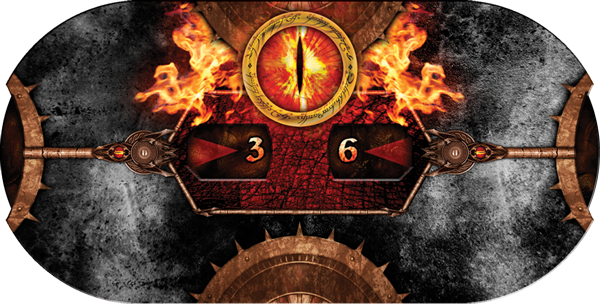 increase their Threat Level — a means for the game to countdown-clock players into a losing corner. The villains can reshuffle their whole deck of cards and keep coming at you, but once the actual Player has run out of cards, well, pfah! Hopefully the others playing with you can survive and continue. I’ve been meditating on this game for a month and I think I get it, though. It is designed to be hard to win. I mean, who would want to play something lame and easy every time? I sense the real joy in playing this Living Card Game is correctly planning ahead how to approach each Scenario. If you combine players’ resources to the most exacting level of balance against the Encounter deck, and if you have some incredible randomizing luck with your card draws, you might be able to conquer and survive to tell the tale. Yes, the baby-level Passage Through Mirkwood is easy enough to beat, but the supposedly intermediate Journey Down the Anduin is insane. I’ve played that scenario dozens of times (and to back me up I brought in very experienced Magic players who are top-notch) and we were brutalized every single time. There is something there we haven’t figured out yet. I’m even more curious to solve that particular puzzle. The supposedly advanced scenario in Dol Guldur was actually manageable and super satisfying with 3 players – we beat the whole thing first time out. Poor Glóin was captured (a random pick out of our Heroes’ cabal) but we rescued him and got out alive without zillions of 1-point Orcs swarming us!
increase their Threat Level — a means for the game to countdown-clock players into a losing corner. The villains can reshuffle their whole deck of cards and keep coming at you, but once the actual Player has run out of cards, well, pfah! Hopefully the others playing with you can survive and continue. I’ve been meditating on this game for a month and I think I get it, though. It is designed to be hard to win. I mean, who would want to play something lame and easy every time? I sense the real joy in playing this Living Card Game is correctly planning ahead how to approach each Scenario. If you combine players’ resources to the most exacting level of balance against the Encounter deck, and if you have some incredible randomizing luck with your card draws, you might be able to conquer and survive to tell the tale. Yes, the baby-level Passage Through Mirkwood is easy enough to beat, but the supposedly intermediate Journey Down the Anduin is insane. I’ve played that scenario dozens of times (and to back me up I brought in very experienced Magic players who are top-notch) and we were brutalized every single time. There is something there we haven’t figured out yet. I’m even more curious to solve that particular puzzle. The supposedly advanced scenario in Dol Guldur was actually manageable and super satisfying with 3 players – we beat the whole thing first time out. Poor Glóin was captured (a random pick out of our Heroes’ cabal) but we rescued him and got out alive without zillions of 1-point Orcs swarming us!
Ostadan: Thematically, the use of Mirkwood as the setting 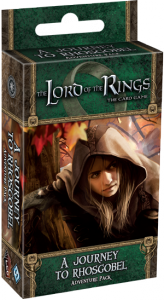 for the core set (and the Shadows of Mirkwood expansions which will follow for the next six months) covers an area not portrayed in The Lord of the Rings, and indeed often suggests (and refers to) The Hobbit, with spiders as a major motif in the introductory scenario, not to mention the aforementioned misplaced references to the Necromancer. Gandalf is also rather more like his Hobbit self, with a card that can be in play for no more than a single game turn (you may have 3 copies in your deck). The three scenarios in the Core Set represent a linked story as the heroes travel from Thranduil’s realm to Lórien, and thence to Dol Guldur, and can be played sequentially as a special challenge. It is easy to imagine future expansions that bring the action to Moria, the South of Gondor, Arnor, and so on.
for the core set (and the Shadows of Mirkwood expansions which will follow for the next six months) covers an area not portrayed in The Lord of the Rings, and indeed often suggests (and refers to) The Hobbit, with spiders as a major motif in the introductory scenario, not to mention the aforementioned misplaced references to the Necromancer. Gandalf is also rather more like his Hobbit self, with a card that can be in play for no more than a single game turn (you may have 3 copies in your deck). The three scenarios in the Core Set represent a linked story as the heroes travel from Thranduil’s realm to Lórien, and thence to Dol Guldur, and can be played sequentially as a special challenge. It is easy to imagine future expansions that bring the action to Moria, the South of Gondor, Arnor, and so on.
Quickbeam: I really like the thematic use of Mirkwood in this first cycle: especially looking forward to future Adventure Packs like A Journey to Rhosgobel, which will have our first Radagast card! Rhosgobel is one of those locations in Middle-earth I have always wanted to go. The new cards that came with The Hunt for Gollum Adventure Pack include the coolest giant Eagles – now that I have them I may go back and reconstruct a Player Deck to beat that Troll on the banks of the Anduin.
Ostadan: At every step, there are tricky decisions: do I use Théodred to assist in advancing the progress in the Quest? Or will I need him to defend against the Spiders? Perhaps I should save him for the counter-attack instead? Shall I spend resources to heal Aragorn, or save them up to be able to bring Gandalf into play? As a solo game, it 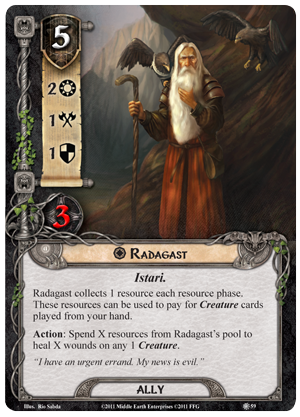 avoids the ‘puzzle’ feel and provides good tension and the feeling that you are really facing these sometimes overwhelming obstacles in pursuing your quest. As a 2-player game, communications and coöperation become critical. Since you cannot read nor disclose your cards directly (other than saying something like ‘I can get rid of that location’s threat this turn’), it is harder for one player to dominate the decision-making process, which is sometimes a problem with games of this sort. It is fun to discover card combinations (a Sneak Attack from Gandalf can be a great play at the right moment). Although the deck-building possibilities with the core set (or even two copies) are perhaps a bit limited, there is plenty of variability in the three scenarios, and of course a card game will always have a fair amount of unpredictability, so the game can be replayed many dozens of times before the experience grows stale. A session will usually take less than an hour per play – longer for your learning games, and shorter if you lose quickly.
avoids the ‘puzzle’ feel and provides good tension and the feeling that you are really facing these sometimes overwhelming obstacles in pursuing your quest. As a 2-player game, communications and coöperation become critical. Since you cannot read nor disclose your cards directly (other than saying something like ‘I can get rid of that location’s threat this turn’), it is harder for one player to dominate the decision-making process, which is sometimes a problem with games of this sort. It is fun to discover card combinations (a Sneak Attack from Gandalf can be a great play at the right moment). Although the deck-building possibilities with the core set (or even two copies) are perhaps a bit limited, there is plenty of variability in the three scenarios, and of course a card game will always have a fair amount of unpredictability, so the game can be replayed many dozens of times before the experience grows stale. A session will usually take less than an hour per play – longer for your learning games, and shorter if you lose quickly.
Quickbeam: Again, I have hugely different experiences here! One hour?? – surely, you jest!! Our average games clock in between 2.5 to 3 hours, but that’s for multi-player games with more complicated outcomes. I want to give fair warning to the casual player out there: if you are psychologically built to get the expected rush of “Yeah, I just won!!” after hours of game play, you may not always get that satisfaction. Yes, you will burn off hours like calories and in the end: lose the scenario flat-on-your-face. A couple of players with whom I enjoy Dragon Dice and Magic have found this LotR game a wee bit frustrating – with the Victories rare, the Beat-Downs frequent. Make just one wrong choice, or if your card draws are crap, then sayonara! For myself, I tend to be more Zen about these things. I take the defeat on the chin and think hard about what changes I need in my Heroes and Allies construction to beat that particular dynamic deck of foes.
Yes, I will heap mounds of praise on Mr. French and the talented people who worked on this game. Yes, there is a delicious tension in every scenario – it’s so much fun to have friends at the table with you solving these Hobbity dilemmas (instead of most games where you beat each other up ruthlessly). Just know going into it that you’re on the ropes usually when you  draw your first hand. If you play solo, only one Nasty comes at you per turn — but play with 3 friends and of course 3 Nasties arrive per turn (then surprise! you randomly draw a Treachery that causes you to draw 3 more villainous cards; and one of them has keyword Surge causing yet another damn Goblin to crowd the field; and look, he has a “when revealed” effect that kills your first born kitten; and then guess what? gasp gasp You’re dead!). I read a forum on BoardGameGeek.com where one clever fellow aggressively played two Players’ Decks at once, as if there were more people at the table. I tried that myself and really loved it. Don’t get me wrong, I am not criticizing the game too harshly. I just think it’s fair to mention the tiny margin of error allowed for victory to be possible at all. Was that not also true in the book for certain characters?
draw your first hand. If you play solo, only one Nasty comes at you per turn — but play with 3 friends and of course 3 Nasties arrive per turn (then surprise! you randomly draw a Treachery that causes you to draw 3 more villainous cards; and one of them has keyword Surge causing yet another damn Goblin to crowd the field; and look, he has a “when revealed” effect that kills your first born kitten; and then guess what? gasp gasp You’re dead!). I read a forum on BoardGameGeek.com where one clever fellow aggressively played two Players’ Decks at once, as if there were more people at the table. I tried that myself and really loved it. Don’t get me wrong, I am not criticizing the game too harshly. I just think it’s fair to mention the tiny margin of error allowed for victory to be possible at all. Was that not also true in the book for certain characters?
Ostadan: If the core game does become stale, there will be monthly 60-card expansion packs, each providing a new quest (and supporting Encounter cards), a new Hero, and new cards for the Heroes’ decks. The first expansions will be a cycle of six, with the overall title of Shadows of Mirkwood. The first pack, The Hunt for Gollum, appeared at the end of June and the second, Conflict at the Carrock (featuring Frodo as the new Hero card), appeared in July 2011. The third, Journey to Rhosgobel, is expected imminently. Each new quest provides its own challenges. The Hunt for Gollum is of an intermediate level of difficulty. The Hero card, Bilbo, might not look immediately very useful, but his card-draw ability is particularly helpful to solo decks. Allies like the Eagle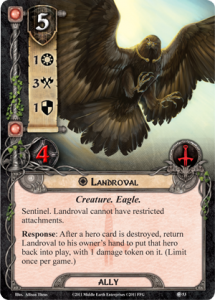 s will prove useful in some decks, and especially in future quests like Rhosgobel, in which more eagles will be there to reinforce them. Fantasy Flight describes the game format as “Living Card Game” (LCG), and the variety of quests and cards, so far, shows this to be a pretty fair description.
s will prove useful in some decks, and especially in future quests like Rhosgobel, in which more eagles will be there to reinforce them. Fantasy Flight describes the game format as “Living Card Game” (LCG), and the variety of quests and cards, so far, shows this to be a pretty fair description.
Quickbeam: I liked the new Bilbo power as soon as I tried a game with him. But one need not fear the game going stale, as long as you’re a tenacious player. I find it invigorating, really. And every now and then if a player wants to try a new mixture of cool Allies and a whole new Scenario, they can dive into a new Adventure Pack! What I like best is that FFG has taken the randomizing out it. Previous to this type of LCG (check out their wildly successful A Game of Thrones LCG while you’re at it) all the collectible card games (CCG’s) in the market were exactly that – collectible – with the consumer forced to buy hundreds of random booster packs just to get a couple of powerful cards, based on rarity. No such thing here. Every Adventure Pack has exactly the same distribution of 60 cards (averaging about $15.00 retail), so you know what you’re getting. Much more palatable for your wallet and your gaming needs. Fantasy Flight’s greatest success here, I think, is that we now have a Tolkien/Middle-earth based card game that combines luck-of-the-draw play with just enough narrative through-line to feel like actual storytelling is taking place. Sharing strategic thinking and your most desperate choices with your friends all united against the same foes is really cool.
Ostadan: Our different experiences of the game are mirrored by the discussions of the games on the FFG forums and on boardgamegeek.com. It may fairly be said that the game can take on many very different faces – varying widely in game length and perceived difficulty – depending on the Quest, the numbers of players and their gaming experiences, how much deliberation they engage in, the particular decks being used by the players and of course sheer luck. The Gollum quest, for example, may be easier with just a solo player accumulating critical Clues about Gollum than having the four clues split among four players; other scenarios are harder as solo. 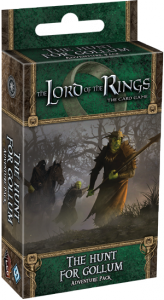 Some cards work better with multiplayer; others benefit the solo player more. Perhaps it should be re-emphasized that while the first couple of scenarios are playable and winnable ‘right out of the box’ with the single-sphere starter decks provided, some amount of deck-building (i.e., selecting particular cards from among all four spheres to create a more effective deck) is required for satisfactory play beyond that level. Those who just want a game they can play ‘as is’ and have no interest in deck-building may well wish to buy some other product; they certainly will not be able to make any effective use of the new cards that come with the expansions without some deck-building. I also suspect that the game (in particular, the scenarios’ difficulty ratings) is optimized for 2-player games, and that ‘play with as many as 4 players, using two Core Sets’ is a kind of marketing afterthought. Finally, what people expect from a solo/coöperative game will vary. Some people expect to beat such a game 70% of the time; others want to win only 30% of the time and would find it too easy otherwise. Fortunately, it is not hard to tune or ‘handicap’ the game to be easier (the rules suggest omitting the dangerous Shadow cards added to Sauron’s minions) or harder (e.g., by increasing the players’ initial Threat levels by some fixed amount). After all, it’s your game. In any case, I think that the very wide range of player experiences possible with this game – and likely to increase as expansions appear – is a Good Thing.
Some cards work better with multiplayer; others benefit the solo player more. Perhaps it should be re-emphasized that while the first couple of scenarios are playable and winnable ‘right out of the box’ with the single-sphere starter decks provided, some amount of deck-building (i.e., selecting particular cards from among all four spheres to create a more effective deck) is required for satisfactory play beyond that level. Those who just want a game they can play ‘as is’ and have no interest in deck-building may well wish to buy some other product; they certainly will not be able to make any effective use of the new cards that come with the expansions without some deck-building. I also suspect that the game (in particular, the scenarios’ difficulty ratings) is optimized for 2-player games, and that ‘play with as many as 4 players, using two Core Sets’ is a kind of marketing afterthought. Finally, what people expect from a solo/coöperative game will vary. Some people expect to beat such a game 70% of the time; others want to win only 30% of the time and would find it too easy otherwise. Fortunately, it is not hard to tune or ‘handicap’ the game to be easier (the rules suggest omitting the dangerous Shadow cards added to Sauron’s minions) or harder (e.g., by increasing the players’ initial Threat levels by some fixed amount). After all, it’s your game. In any case, I think that the very wide range of player experiences possible with this game – and likely to increase as expansions appear – is a Good Thing.
Much too hasty,
Ostadan & Quickbeam
FANTASY FLIGHT GAMES mini-site for “The Lord of the Rings Living Card Game” is found here: http://www.fantasyflightgames.com/edge_minisite.asp?eidm=129
“TORn TUESDAYS Live with Quickbeam” broadcast a full demo of the game on 9 August 2011: http://www.stickam.com/theonering Scroll to the bottom and click “Episode 2.” Future episodes will feature interviews with the LCG designers, artists and discussion of new Adventure Packs!
[1] introduced in Middle-earth Quest – Ostadan


